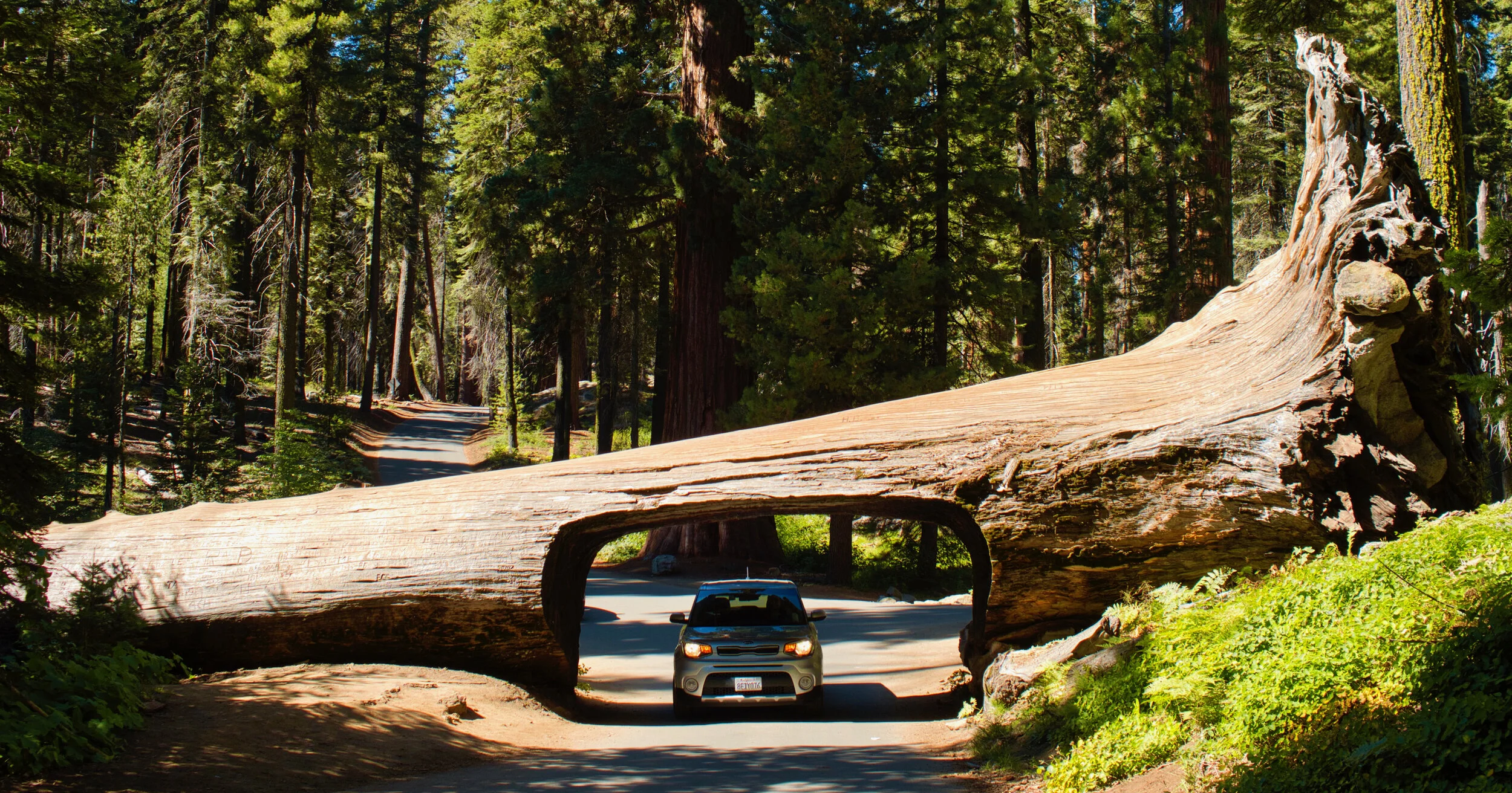Fire in Sequoia National Park
As I am writing this the Sequoias in and around California’s Sequoia National Park & Kings Canyon are being threatened by wildfires. Fire has always been a part of nature in this region and the huge trees even need it to thrive, but with the climate changing and the fires becoming hotter and more devastating, the Sequoia trees struggle to survive them. Last year, between 7,500 and 10,600 mature giant Sequoias died in the Castle fire. That’s more than 10% of the worlds population! This year, so far, firefighters and park staff have been able to keep the precious Sequoias within the park safe from the KNP Complex Fire, e.g. by wrapping them in an aluminium-based burn-resistant material. But the Windy fire, has destroyed at least two dozen giant sequoia trees of now. If nothing is done against the changing climate soon, then, in the future, there will be no Sequoias left in the area. And since Sequoia trees have very specific climate requirements, so specific that they only grow in some small mountain areas of the Sierra Nevada, there may then be no Sequoia trees left in the world.
Two years ago, when I was visiting the Sequoia National Park, I didn’t know about all this. Honestly, I don’t think I had ever heard about Sequoia trees before. But, I was truly impressed when I saw them.
Sequoias can live for more than 3000 years and grow to be more than 60 meters (200 feet) tall. That is about the hight of a 15 story building! Their up to 46 cm thick bark is keeping the trees protected in low-intensity fires, which used to naturally occur in intervals from 6 to 35 years in the forests the Sequoias call their home. But the Sequoia trees not only survive these kinds of fires, they even need them to reproduce! Sequoia cones stay closed and retain their seeds for up to 20 years until the hot dry air caused by a fire dries out older cones and lets them open. Then within a week or two the seeds fall down onto the forest floor. While the cones could also be opened by squirrels and other wildlife, the seeds will only germinate on bare soil that has been cleared by fire. This is why fires have been prescribed and managed in Sequoia National Park since 1979.
Driving through a prescribed fire at Sequoia National Park
Even under normal conditions, only 2% of Sequoia seeds survive to become a mature giant tree. It is due to the trees extremely long life span and resistance that the species survives. Therefore it is easy to see what a huge loss it is when Sequoia trees, which could otherwise live on for hundreds or even thousands of years, die in extreme wildfires, too intense for the tree’s barks to keep them safe. Sadly, fires of this intensity have become a yearly event in the region.
The threatened National Parks are also home to many species of wildlife. When visiting we where lucky to observe some of them. Especially, meeting this family of Black bears and observing them from afar was a remarkable experience.
But it is not just for the sake of the trees and the wildlife living in and underneath them, that we need to preserve the forests of the national parks. Having them destroyed by fires would have a gigantic impact on Californias ecosystem and therefore on its human inhabitants as well.
While the fires are burning it is unclear how much damage is being done. It might still take weeks to assess the full extent of the destruction. But, there are things we can do for the Sequoias and the national parks. Donations to the Sequoia Conservation fund (9) will help directly to better protect Sequoia trees in the future. And doing everything in our power to reduce greenhouse gas emissions will benefit not only these national parks, but all of our environment!
If all of us, globally, work together, future generations may still be able to look up to the crowns of giant sequoia trees and be impressed by their age and their beauty.
Resources:
https://www.cnn.com/travel/article/sequoia-national-park-giant-forest-fire/index.html
https://www.npr.org/2021/09/17/1037914390/giant-sequoia-national-park-wildfire-climate-change
https://www.fs.usda.gov/Internet/FSE_DOCUMENTS/stelprdb5445750.pdf
https://wildfiretoday.com/2021/10/01/at-least-two-dozen-giant-sequoia-trees-destroyed-in-windy-fire/






